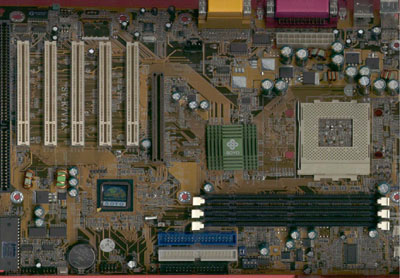Soyo SY-K7VTA KT133 Socket-A ATX (Production)
by Henry Kuo on November 6, 2000 1:36 AM EST- Posted in
- Motherboards
Four months ago, VIA released the KT133 chipset, which fully support AMD Socket-A processors, including the Thunderbirds and Durons. With the successes of the AMD processors and the chipset, almost all companies released aKT133 solution. Among the first wave of KT133 motherboards, the ASUS A7V and the ABIT KT7, with their abilities to change the multiplier ratios of the processors, clearly jumped out as the best.
Four months is a long time, however, and a lot of motherboard manufacturers have been working towards improving their KT133 solutions. Soyo is clearly one of them- just one month ago, we received the pre-production version of the SY-K7VTA motherboard. To be frank, that board did not perform or overclock very well. But as an engineering sample, the board was really stable.
Recently the retail version of the SY-K7VTA finally arrived at AnandTech labs. What could have Soyo added to the board within this month? Anything that can get users really excited? Or it is just the same as the sample we got a month ago? Let's find out.
|
Soyo SY-K7VTA |
|
|
CPU
Interface
|
Socket-A
|
|
Chipset
|
VIA
KT133
|
|
Form
Factor
|
ATX
|
|
Bus
Speeds
|
90 / 95 / 100 / 101 / 102 / 103 / 105 / 107 / 109 / 110 / 113 / 115 / 117 / 120 MHz |
|
Voltages
Supported
|
Auto
Detect |
|
Memory
Slots
|
3
168-pin DIMM Slots
|
|
Expansion
Slots
|
1
AGP Slot |
|
On-board
Audio
|
Sigmatel
STAC9721T AC 97 CODEC
|
|
BIOS
|
Award Modular BIOS 6.00PG (Revision 2AA1) |
The Good
Once again, when you take a look at the retail version of the SY-K7VTA, you will notice that it looks an awful lot like the pre-production sample. It uses the same size PCB, which is about 12 by 9 inches. On the pre-production sample, the power supply connector was placed next to the serial / parallel connectors and some tall capacitors. That means that the power cables would have to run over the memory and CPU, potentially causing airflow problems, especially since current processors generate considerable among of heat. Also, from the picture, you can see that the capacitors are very close to the power cable connectors, making it very hard to unplug the power cables. Unfortunately, Soyo stays with the same design in the retail version of the board. The best place for the power supply connector would be the right edge of the motherboard.












0 Comments
View All Comments